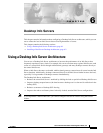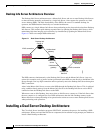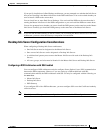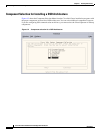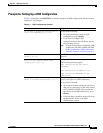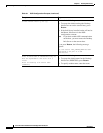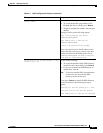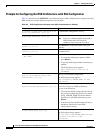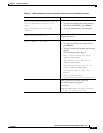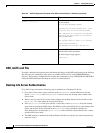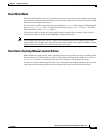
6-11
Cisco Info Center Installation and Configuration Guide, 3.6.1
OL-6349-01
Chapter 6 Desktop Info Servers
Installing a Dual Server Desktop Architecture
Dual-Write Mode
Dual-write mode enables operators to quickly see the results of tool actions (for example, acknowledge
and prioritize) on their dual server desktops. This is done by sending all tool actions to both the Desktop
Info Server and the Master Info Server.
You can enable or disable dual-write mode by changing the
DualWrite field setting in the Desktop Info
Server’s
master.national table. To enable dual-write mode, set the DualWrite field to 1. To disable
dual-write mode, set the
DualWrite field to 0.
You can also enable or disable dual-write mode from the command line. For details of the event list
command line options, see the Netcool/OMNIbus Administration Guide.
Note If you enable dual-write mode, there is a chance alert information may not be updated on all DSDs
simultaneously. For example, this can be due to heavy network traffic. If you require all DSDs to always
display identical information, you should disable dual-write mode.
Dual Server Desktop Manual Journal Entries
Manual DSD alert journal entries (those entered by the user) are typically sent only to the Master Info
Server; however, if a selected alert is exclusive to the Desktop Info Server (in which case it will have a
MasterSerial value of 0) its manual journal entries are sent only to the Desktop Info Server.
An alert is exclusive to the Desktop Info Server if it is inserted into the Desktop Info Server by any means
other than the unidirectional gateway (from the Master Info Server to the Desktop Info Server).



